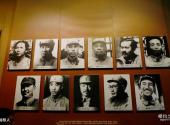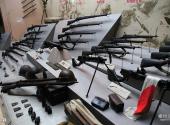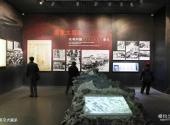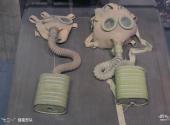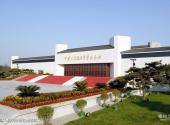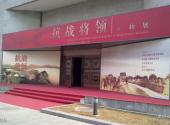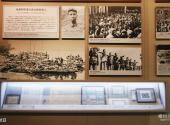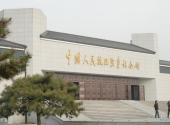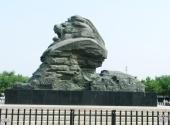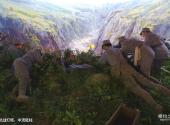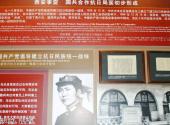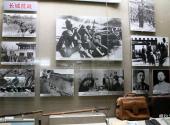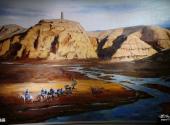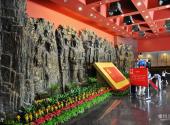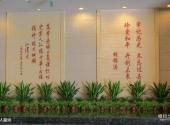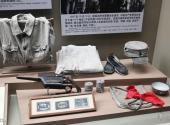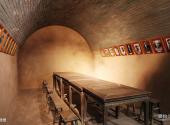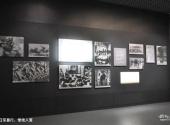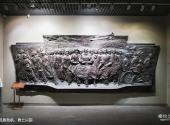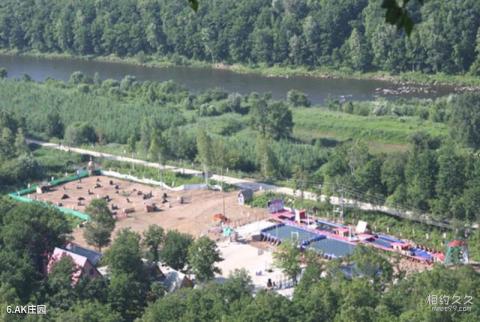
Scenic spot introduction:
The Chinese People's Anti-Japanese War Memorial Hall was established to commemorate the Chinese people's great Anti-Japanese War. It is the only large-scale comprehensive thematic memorial hall in the country that comprehensively reflects the history of the Chinese People's Anti-Japanese War. It is also an important window for people around the world to understand the history of China's Anti-Japanese War. In this building with national characteristics, more than 640 precious historical pictures and 936 sets of cultural relics are on display, supplemented by sculptures, oil paintings, traditional Chinese paintings and other artworks, using sound, light and electricity technologies, as well as phantom imaging, three-dimensional Landscapes, touch screens, etc. comprehensively and objectively reproduce the glorious history of the Chinese people's heroic struggle against the Japanese invaders, demonstrating the mainstay role of the Chinese Communist Party in the unity of the entire nation in the war of resistance, the important position of the Chinese People's War of Resistance Against Japanese Aggression in the world's anti-fascist war, and the The historical significance of the great victory of the Chinese People's War of Resistance Against Japanese Aggression. For the people and young people, it is an excellent and vivid teaching material for remembering the historical place and carrying out patriotism education.Attractions distribution:
The memorial hall is located at No. 101, Wanpingchennei Street, Marco Polo Bridge, 500 meters away from Marco Polo Bridge. The memorial hall is divided into two parts: the Anti-Japanese War Square and the Memorial Hall. In the center of the square stands the "Lugou Waking Lion" sculpture and the national flag pole. There are 7 lawns on both sides of the central axis. The memorial hall has an exhibition with the theme of "Great Victory" and consists of 3 comprehensive halls. It consists of three thematic pavilions on Japanese atrocities, people's war, and anti-Japanese heroes and a half-view painting pavilion, which respectively display the entire process of the national anti-Japanese war, the heinous crimes of the Japanese invaders, the magnificent national anti-Japanese national salvation movement and bloody battle scenes. The famous The heroic deeds of anti-Japanese heroes Yang Jingyu, Zhao Yiman, Zuo Quan, Peng Xuefeng, Zhang Zizhong, Tong Linge, Zhao Dengyu and others, and the battlefield of the July 7th Incident simulated using modern means such as sound, light and electricity. In the display content, the scenes of the "731" bacterial force and the Nanjing Massacre were also restored and displayed.Scenic spot qualifications:
It is a national 4A-level scenic spot, one of the first national key red tourism classic scenic spots, one of the first national patriotism education demonstration bases, a national defense education base, a national integrity education base, and a national first-class museum.Scenic spot features:
Visiting, studying, patriotic education, historical research, memorial hallScenic spot map:
travelling guideline:
1. The maximum number of visitors received per day is 5,000 (3,000 in the morning and 2,000 in the afternoon). If there is crowding in the museum, tickets will be limited to a limited time.
2. Half-view painting broadcast:
(1) "July 7th Incident" The half-view painting gallery is located in the center of the main exhibition hall, with six shows per day, and each show is limited to 60 people.
(2) Playing time: 9:30/10:30/11:10 am; 14:00/15:00/15:40 pm.
3. Explanation and guided tour:
(1) Regular free explanations are provided every Tuesday and Thursday at: 9:00, 9:30, 10:00, 10:30 , 11:00, 13:30, 14:00, 14:30, 15:00, 15:30.
(2) Chargeable explanations are available on other open days. Chinese lectures cost 100 yuan/session (within 50 people), and foreign language lectures cost 200 yuan/session (within 50 people). The duration of each lecture is within 1 hour and 30 minutes (excluding special exhibitions).
(3) Audio guides in Chinese, English, Japanese, Korean, German, French, Spanish and Italian are available for rent at 20 yuan each (deposit 100 yuan).
Tour route:
Visiting route of the memorial hall: Prologue Hall → National crisis, rise of national salvation → Cooperation between the Kuomintang and the Communist Party and joint efforts in the national disaster → Beacon and mainstay of the Anti-Japanese War → Japanese atrocities and tragic death → Half-view painting hall → Bloody battlefields, national songs → Many help and international support → Historical victory, Huge contribution → Take history as a mirror and face the future
One-day tour of Wanping City: Marco Polo Bridge → Wanping City → Chinese People’s Anti-Japanese War Memorial Hall → Chinese People’s Anti-Japanese War Memorial Sculpture Garden
Best time to visit:
All seasons
Shopping recommendations:
(Souvenirs) war books, audio-visual products, "Freeing Peace" silk scarves, "Glorious Examples" commemorative stamps, "Writing Peace" gift boxes, "Fangyuan" pendants, Haiwa small alarm clocks, refrigerator magnets and badges, etc., hero seals , half-view copper engraving, dove of peace desk place and bookmark, lion awakening badge, July 7th commemorative medal, calendar pad, canvas bag, "Fortitude and Strength" kraft paper notebook, library logo keychain, comic folding fan, etc.
Scenic spot map:
Scenic spot location:
China>Beijing>Fengtai District>Lugouqiao Township
How to get there:
Bus routes: 301, 309, 310, 313, 329, 339, 452, 458, 459, 624, 661, 662, 693, 715, to the Anti-Japanese War Sculpture Garden Get off the bus and walk 600 meters along Dongguan South Street.
Self-driving route: Take the Beijing-Shijiazhuang Expressway in the city and leave from the Fifth Ring Road/Beijing-Kaifeng Expressway/G108 exit; after crossing Dawayao Bridge, enter Marco Polo Bridge South Road and drive along Chengnei Street to Wanping Ancient City Pedestrian Street. That’s it.
Scenic area map:
Click to expand the scenic area map
Ticket prices for the Anti-Japanese War Memorial Hall:
It is open to the public free of charge, and tickets must be collected with a valid ID to enter the museum.
Scenic area opening hours:
09:00-16:30, ticket collection stops at 16:00.
Closed on Mondays, open as usual on statutory holidays and major Anti-Japanese War anniversaries.

